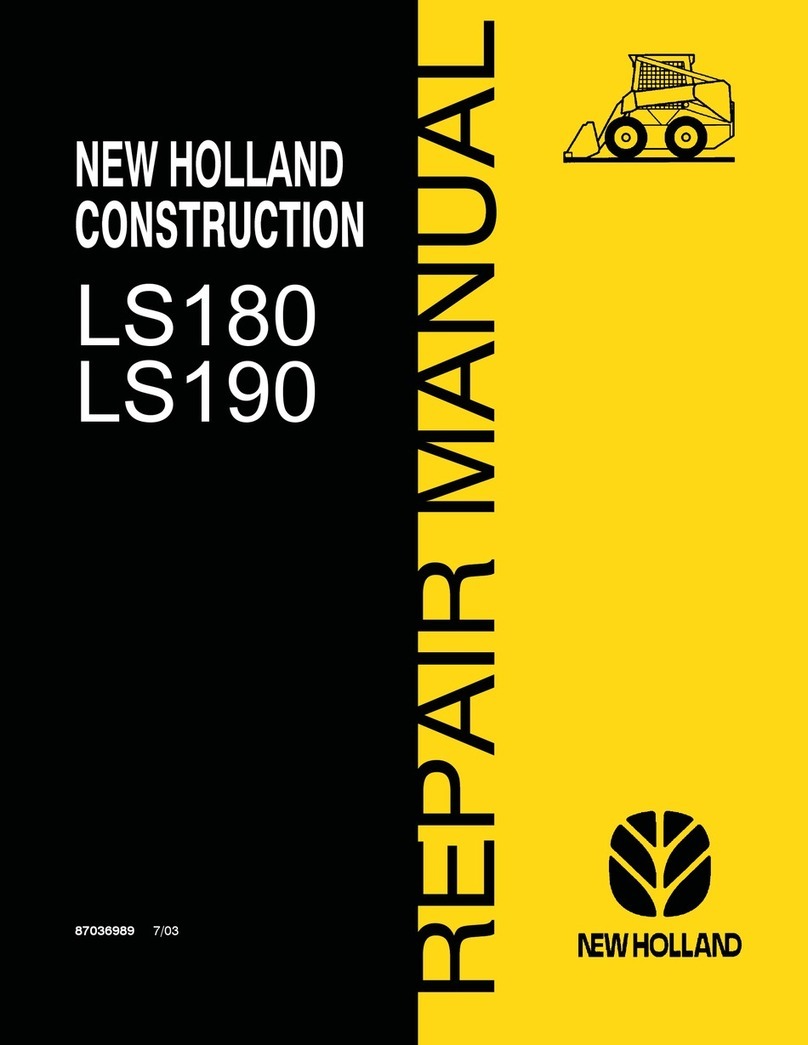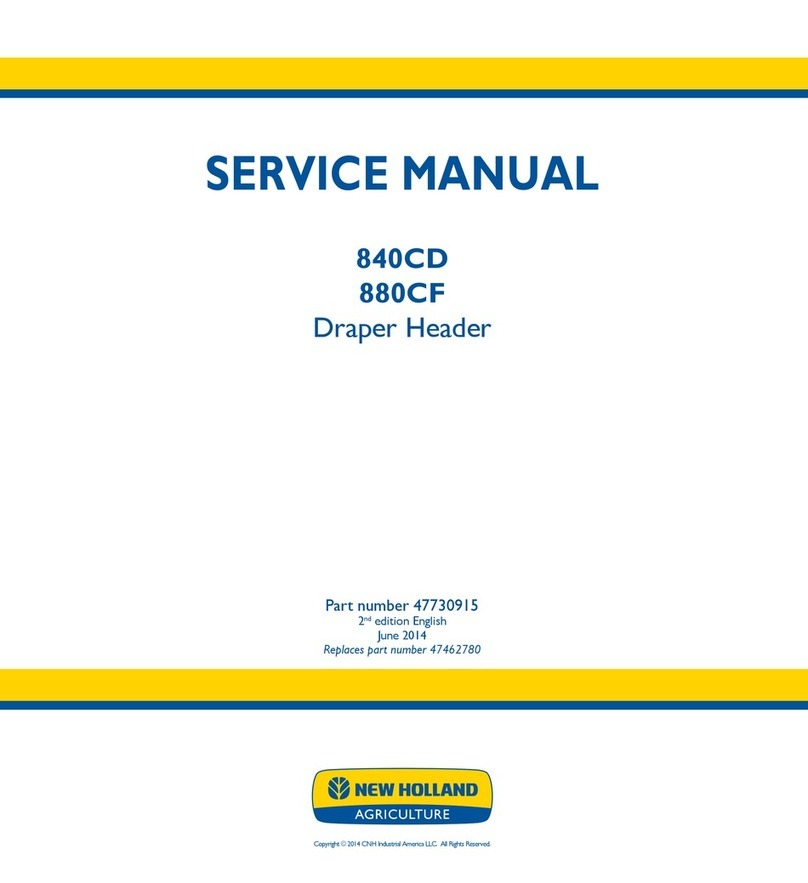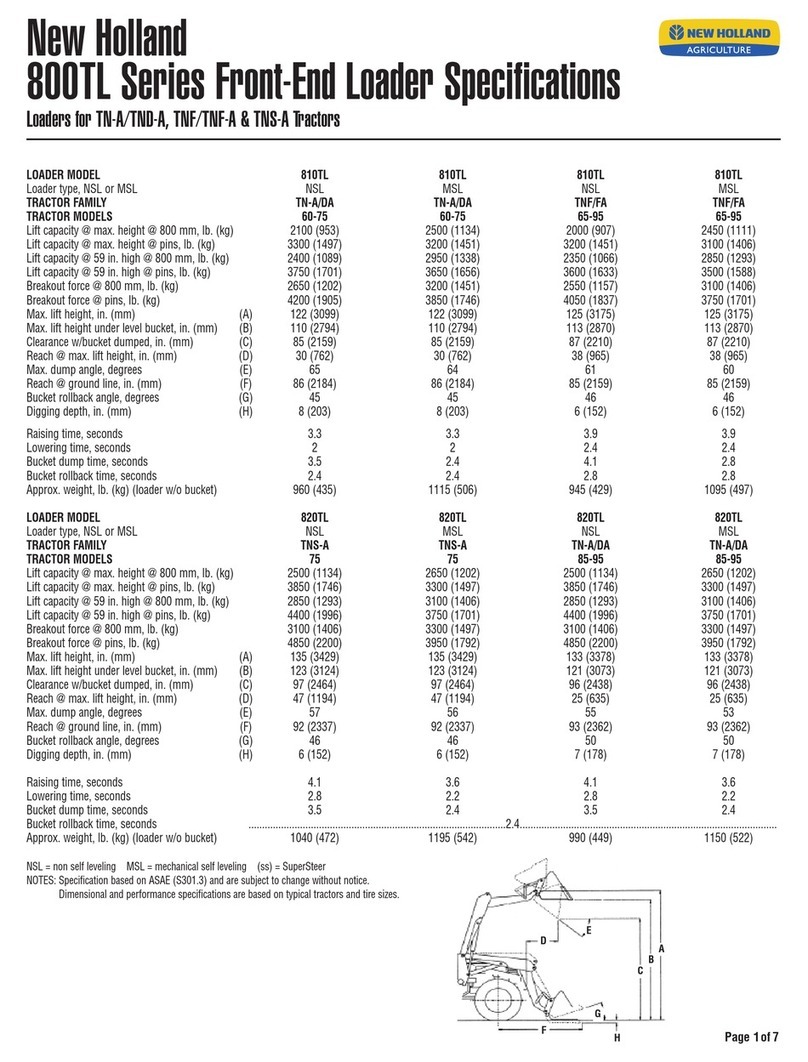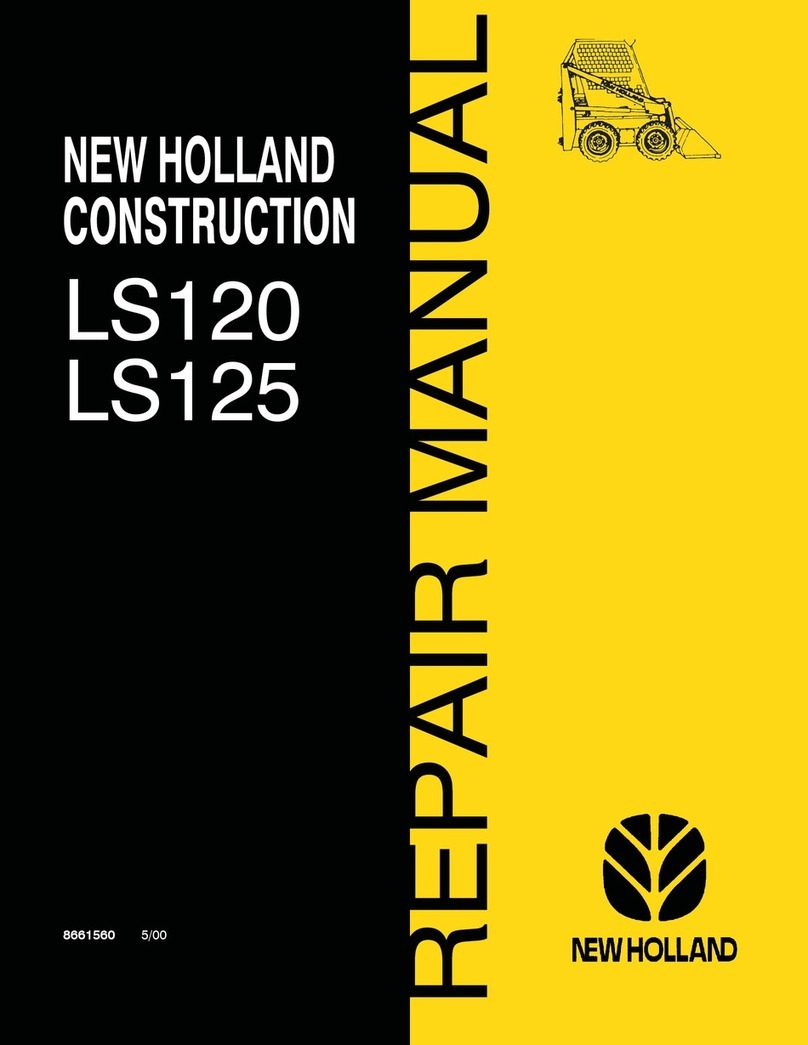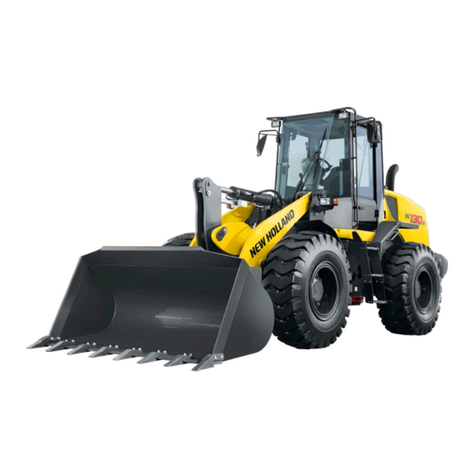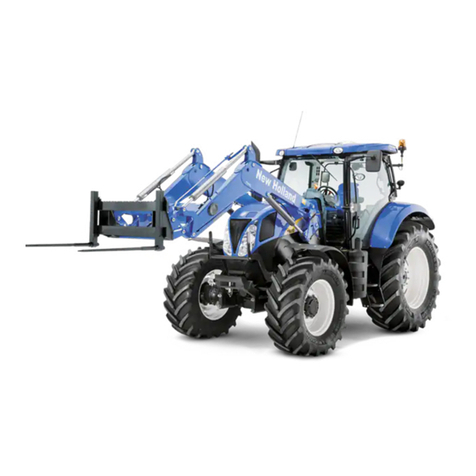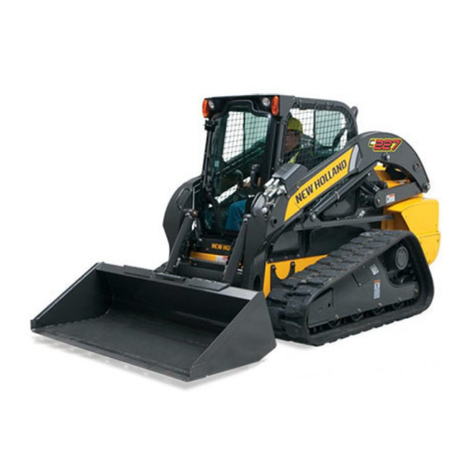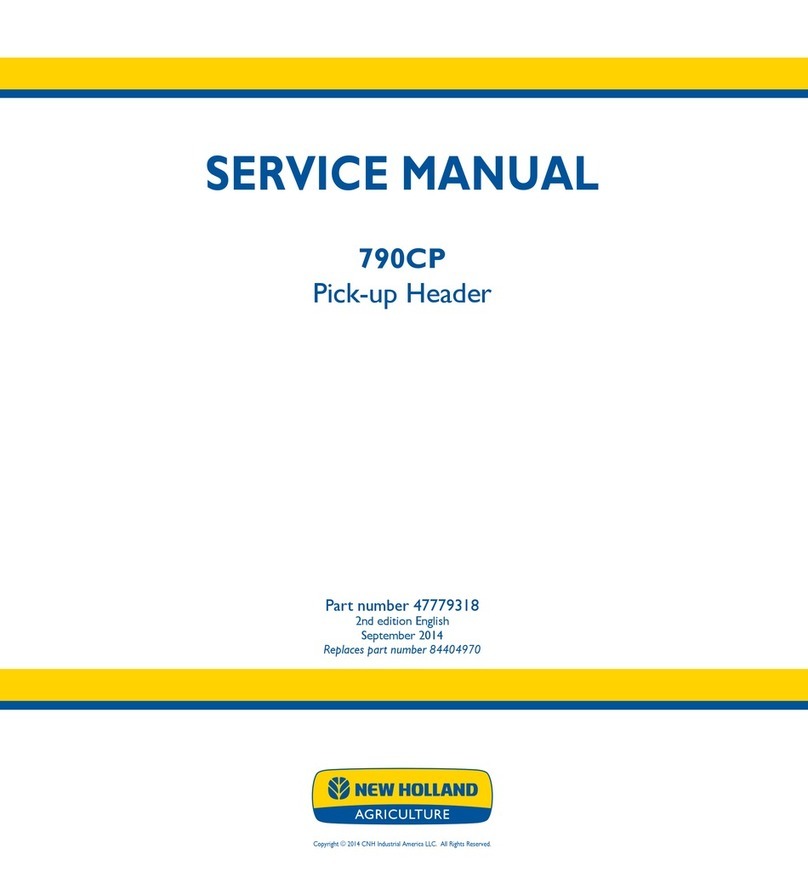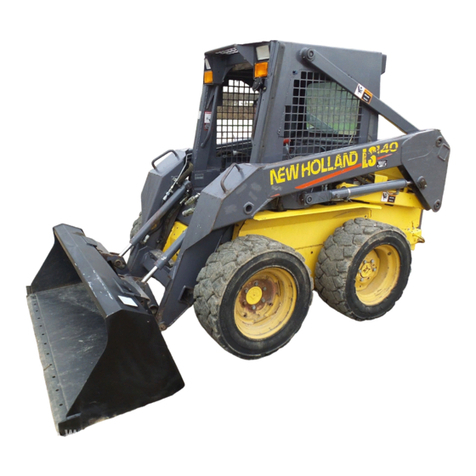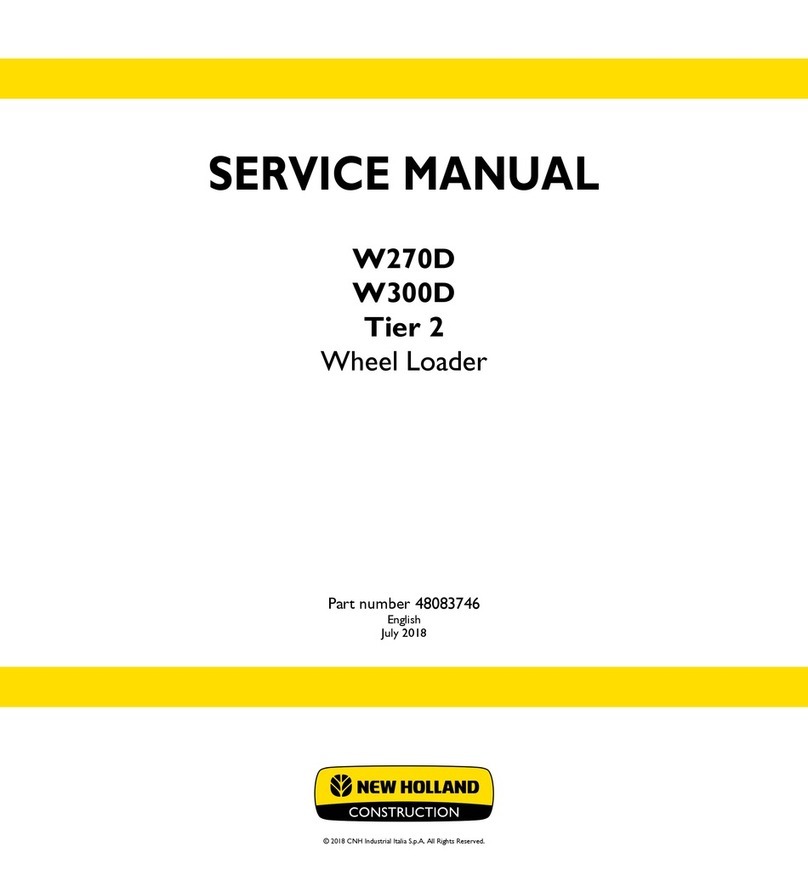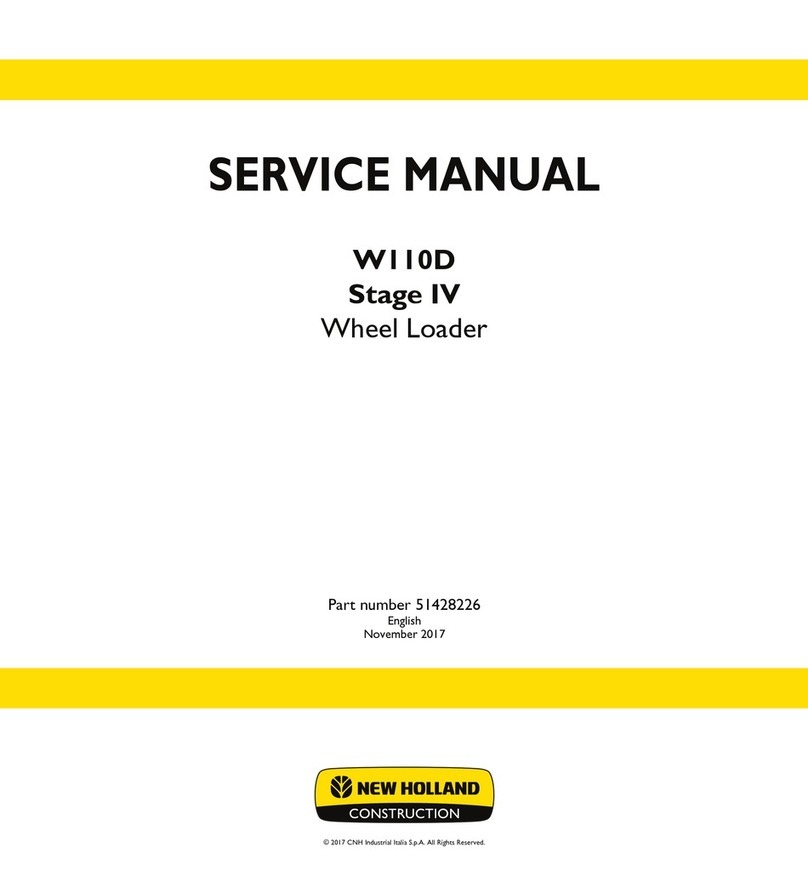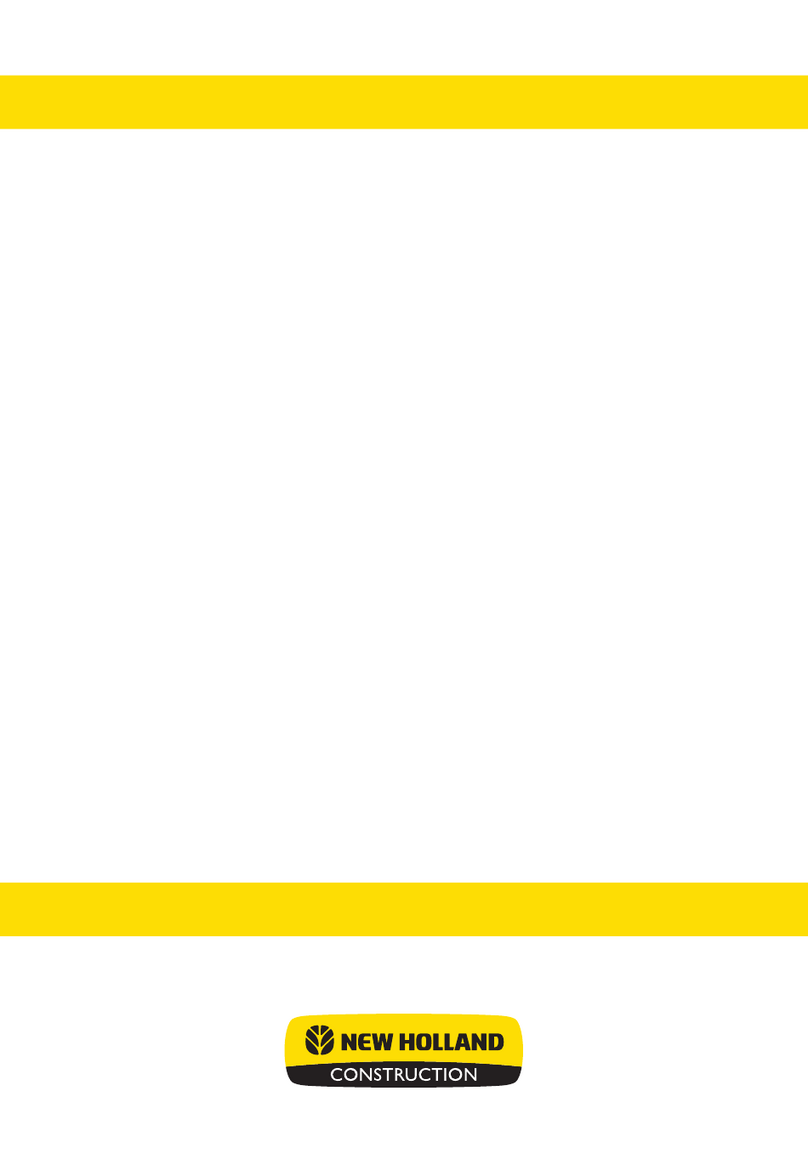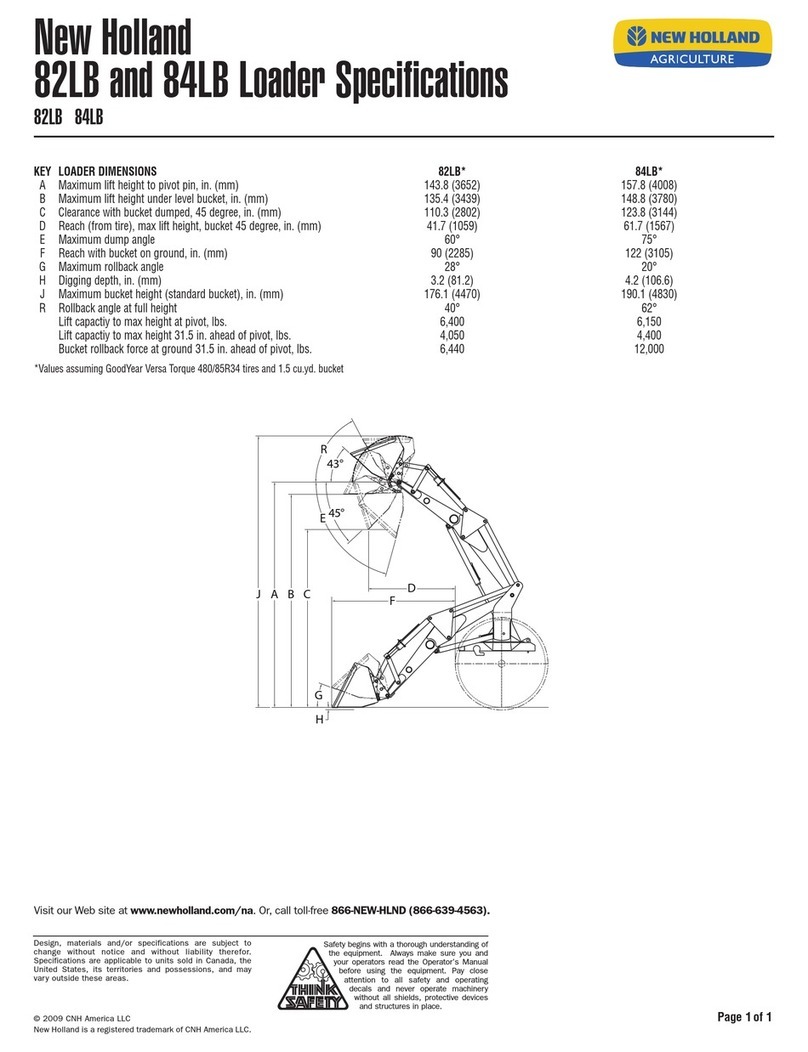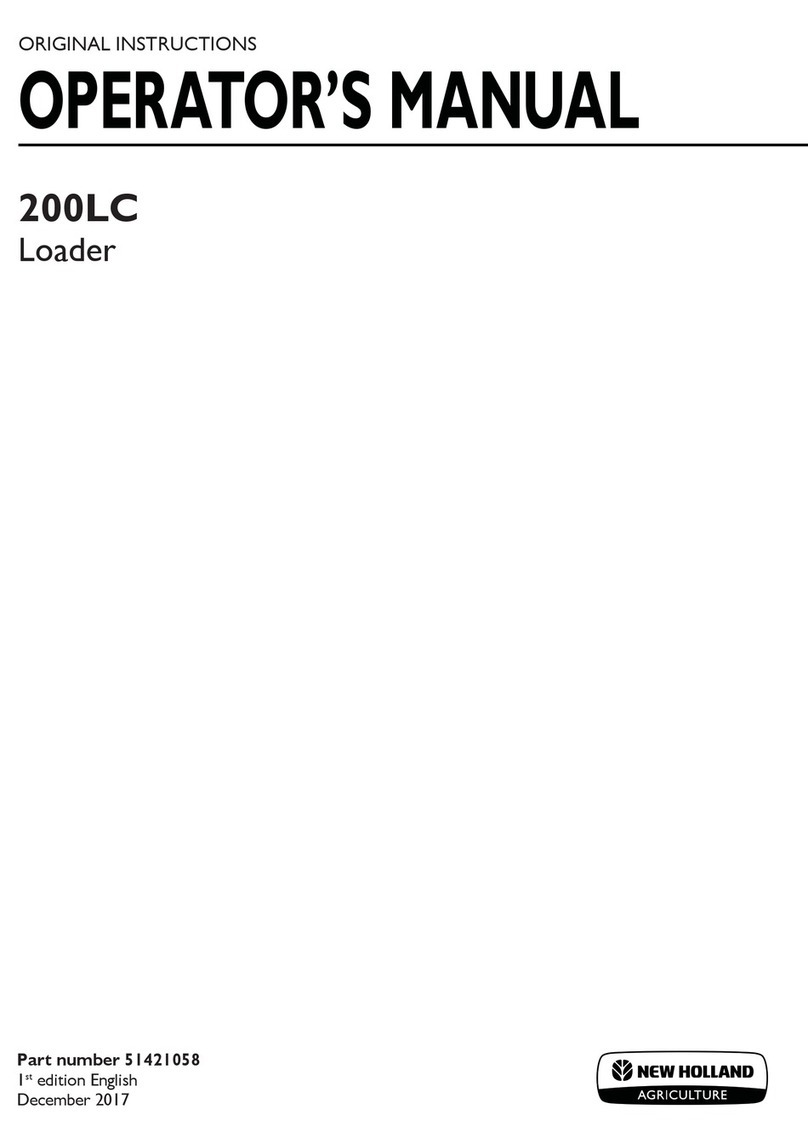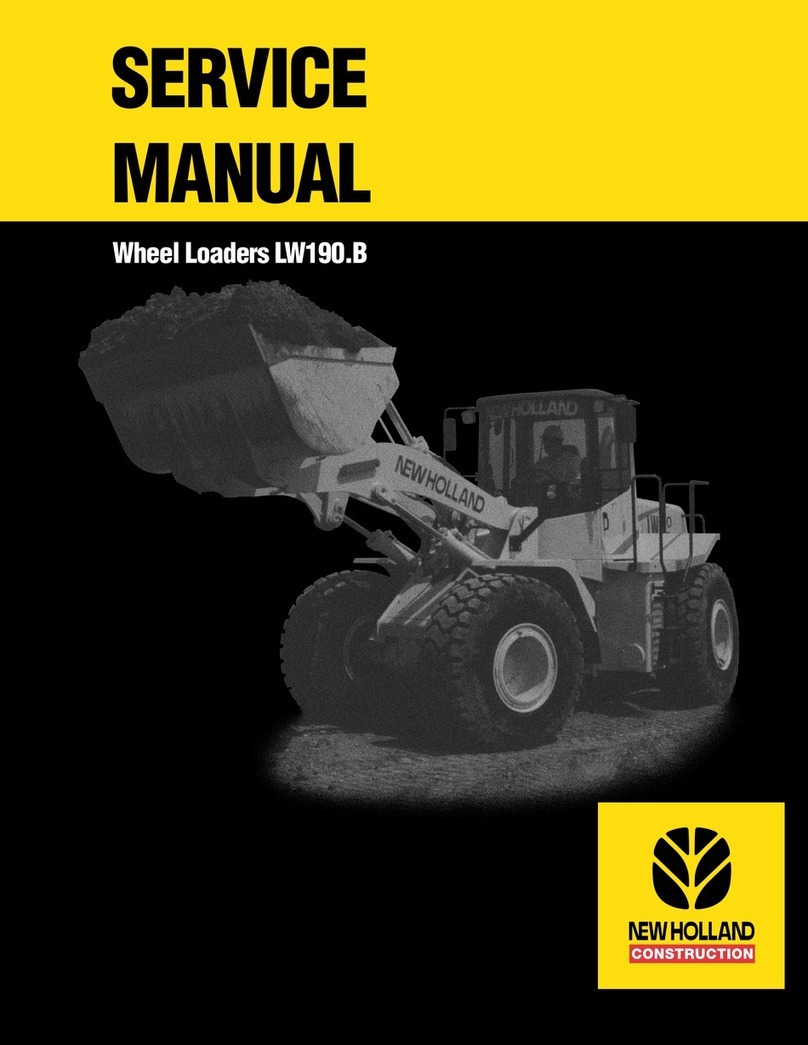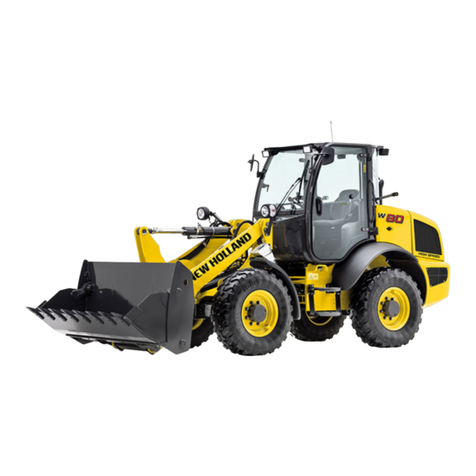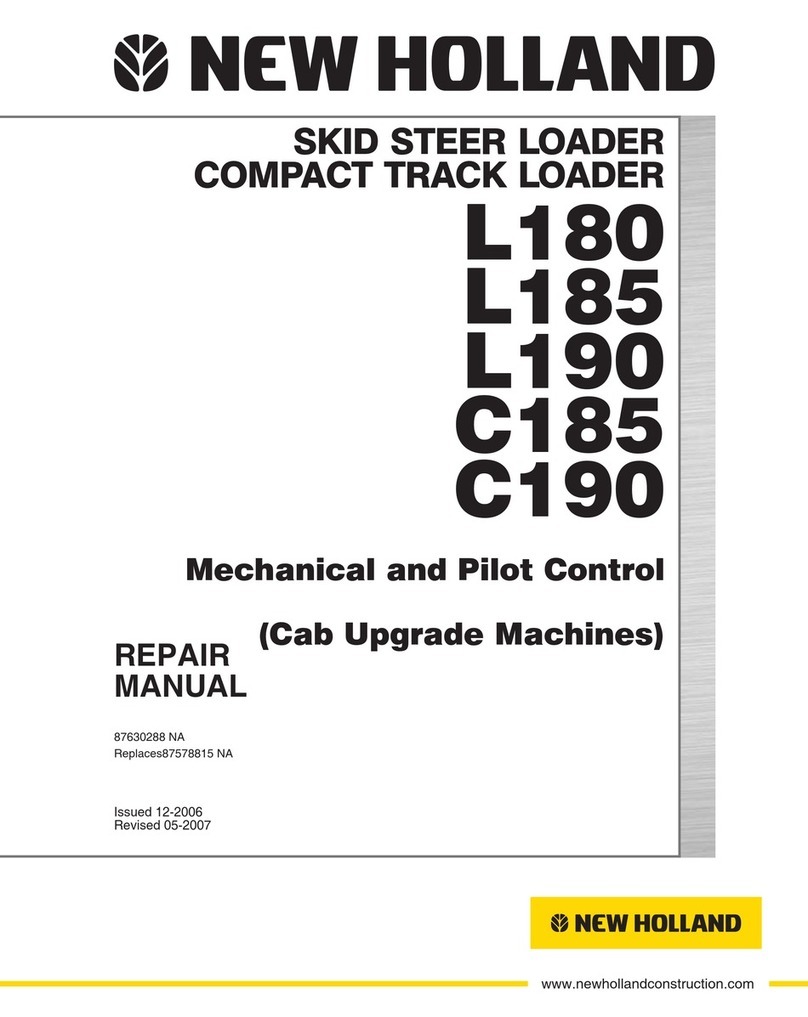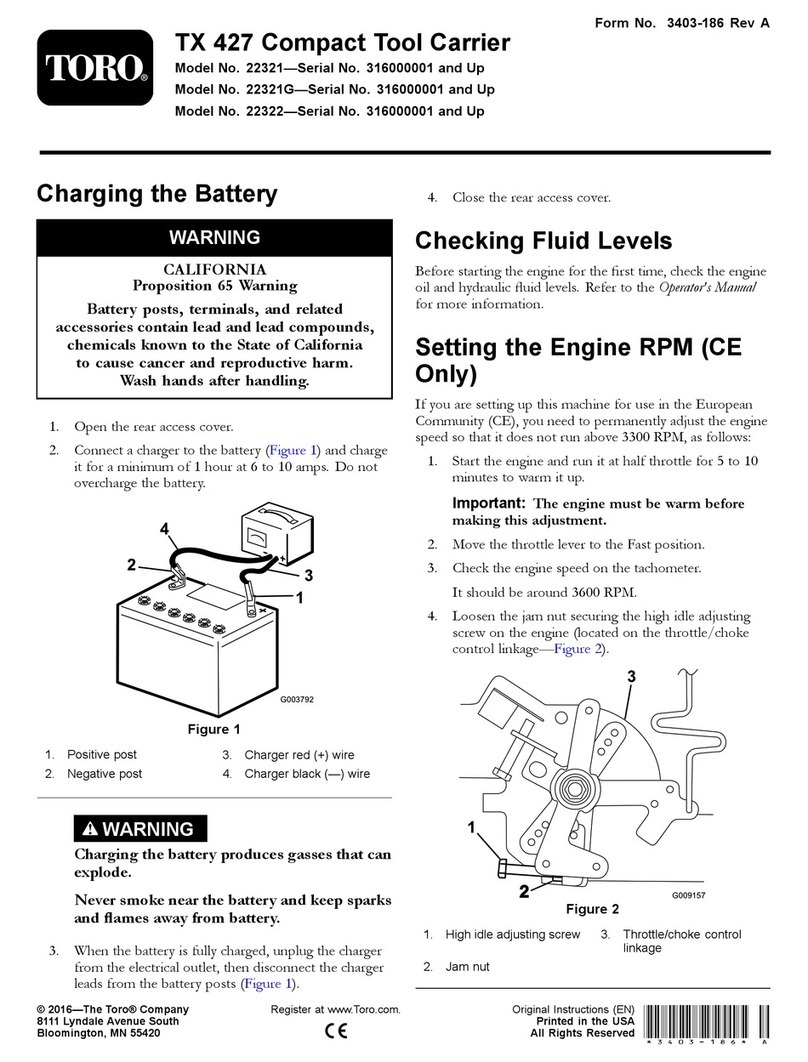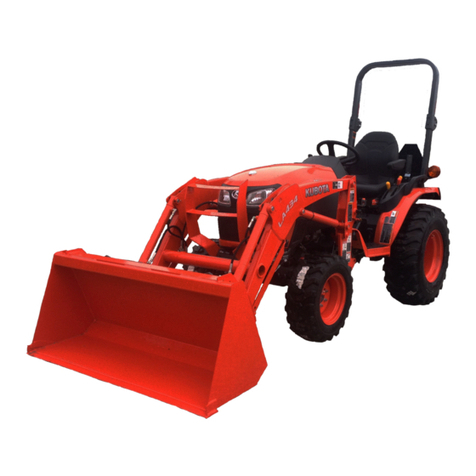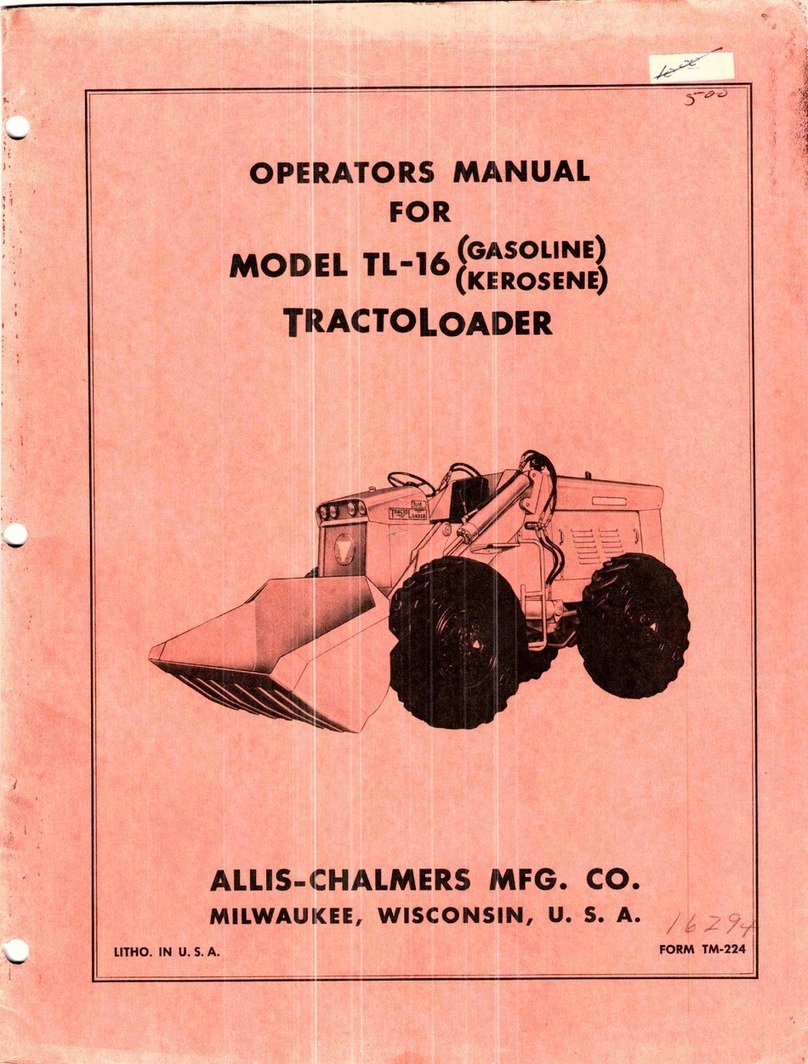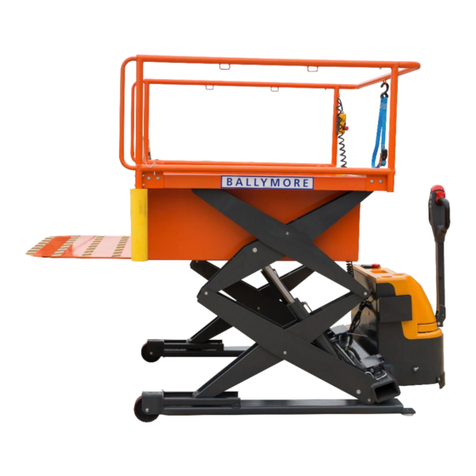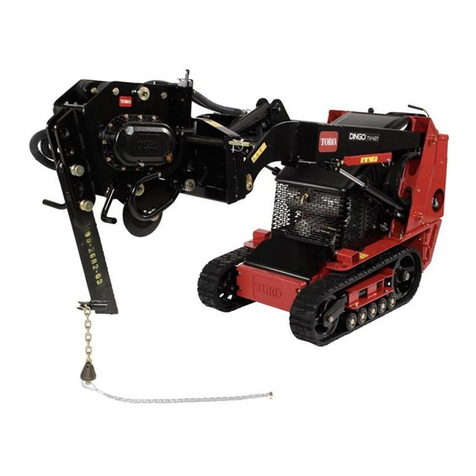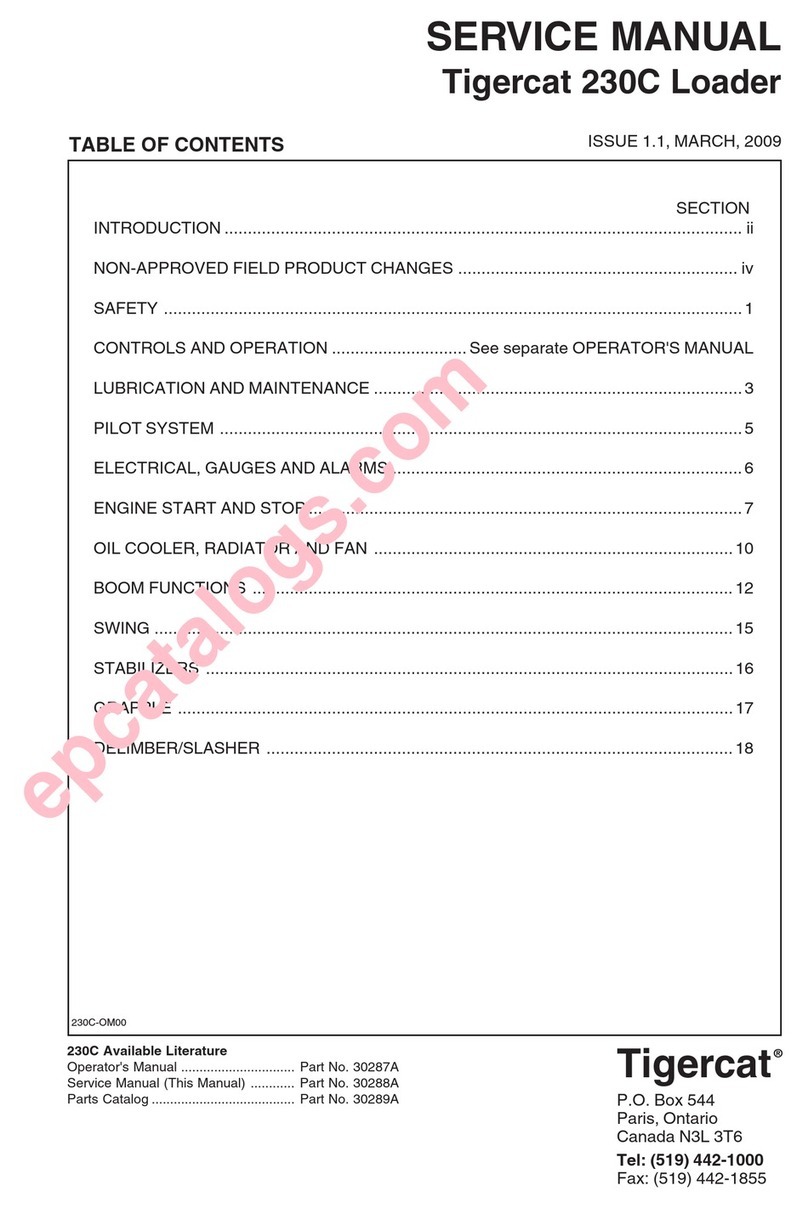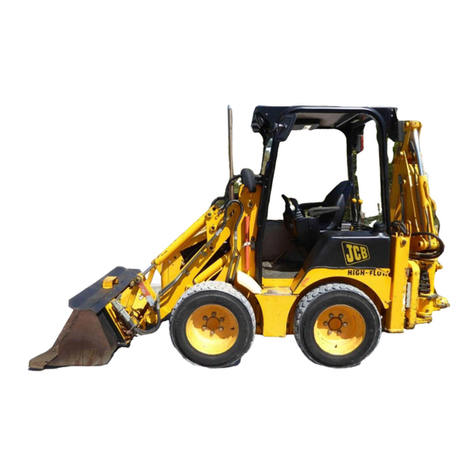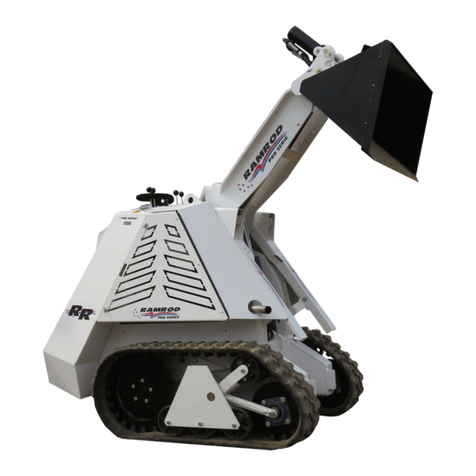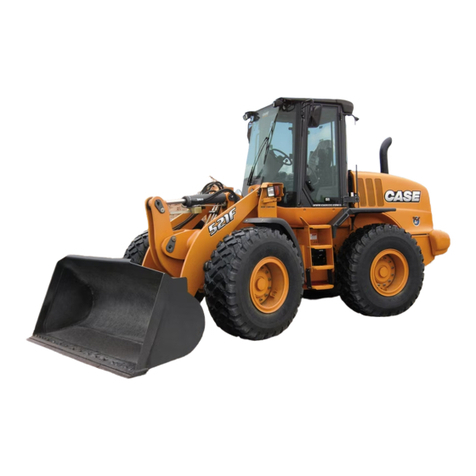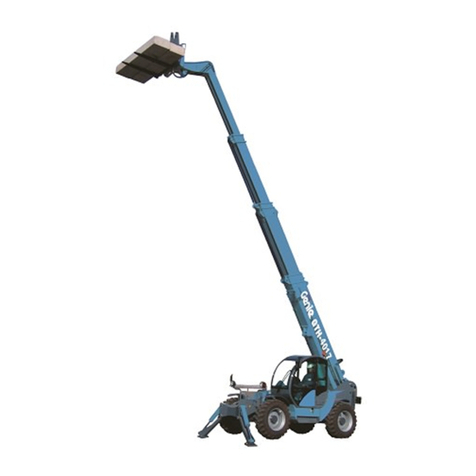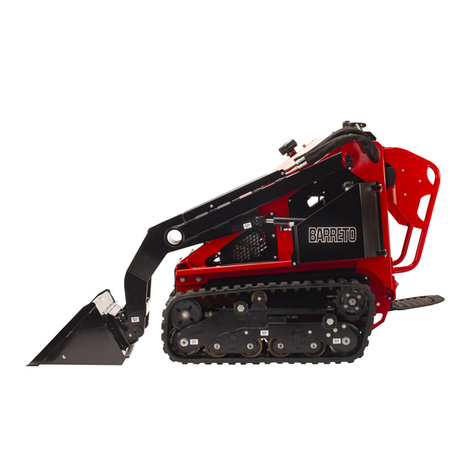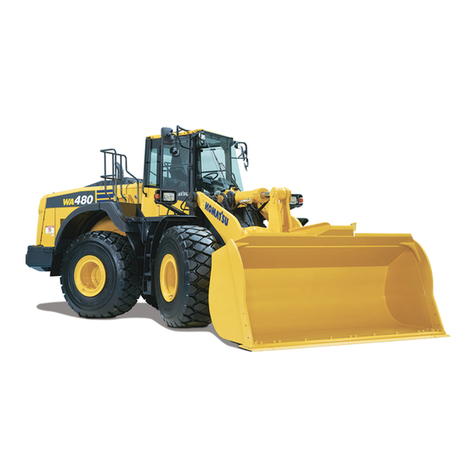©1999NEWHOLLANDCONSTRUCTION
18. GIVE COMPLETE AND UNDIVIDED ATTENTION TO THE JOB AT HAND SO THAT COMPLETE
CONTROL OF THE MACHINE IS MAINTAINED AT ALL TIMES.
19. DRIVE SLOWLY OVER ROUGH GROUND AND ON SLOPES; KEEP ALERT FOR HOLES,
DITCHES AND OTHER IRREGULARITIES THAT MAY CAUSE THE MACHINE TO OVERTURN.
20. AVOID STEEP HILLSIDE OPERATION WHICH COULD CAUSE THE MACHINE TO OVERTURN.
21. NEVER TRANSPORT A LOADED BUCKET AT FULL HEIGHT. OPERATE THE MACHINE WITH
THE LOAD AS LOW AS POSSIBLE UNTIL IT BECOMES NECESSARY TO RAISE THE BOOM
TO DISCHARGE THE LOAD INTO A TRUCK, CONTAINER, ETC.
22. REDUCE SPEED WHEN TURNING SO THERE IS NO DANGER OF OVERTURNING.
23. NEVER DRIVE UP OR BACK UP A HILL OR INCLINE WITH A RAISED BOOM OR THE MACHINE
COULDOVERTURN.
24. ALWAYS LOOKBEHIND YOU BEFORE BACKINGUP THE MACHINE.
25. MAINTAIN PROPER FLUID LEVELS TO PREVENT LOSS OF POWER, BRAKING OR OTHER
FUNCTIONS.
26. DO NOT ALLOW PASSENGERS TO RIDE ON THE MACHINE AT ANY TIME.
27. DO NOT ALLOW CHILDREN TO OPERATE THE MACHINE OR RIDE ON THE MACHINE AT ANY
TIME.
28. DO NOT ALLOW ANYONE TO OPERATE OR SERVICE THE MACHINE WITHOUT PROPER
INSTRUCTION.
29. OSHA REQUIRES THAT ALL OPERATORS BE INSTRUCTED ON THE PROPER OPERATION
OF THE MACHINE BEFORE THEY OPERATE THE UNIT.
30. DO NOT OPERATE THE LOADER IN ANY POSITION OTHER THAN WHILE IN THE
OPERATOR’S SEAT WITH THE SEAT BELT SECURELY FASTENED.
31. BEFORE STARTING THE ENGINE, BE SURE THAT ALL OPERATING CONTROLS ARE IN
NEUTRALAND THE PARKING BRAKE IS ENGAGED.
32. NEVER OPERATE THE ENGINE IN A CLOSED BUILDING WITHOUT ADEQUATE VENTILATION.
33. REFUEL THE MACHINE OUTDOORS WITH THE ENGINE SHUT OFF. REPLACE THE FUEL
CAP SECURELY. USE AN APPROVED FUEL CONTAINER. DO NOT SMOKE WHEN
HANDLING FUEL. AVOID SPILLING FUEL.
34. AFTER OPERATING THE ENGINE, NEVER TOUCH THE MUFFLER, EXHAUST PIPE, ENGINE
OR RADIATOR UNTIL THEY HAVE HAD TIME TO COOL.
35. DRESS APPROPRIATELY – WEAR RELATIVELY TIGHT-FITTING CLOTHING WHEN
OPERATING OR SERVICING THE MACHINE. LOOSE OR TORN CLOTHING CAN CATCH IN MOVING
PARTS OR CONTROLS.
36. BEFORE SERVICING THE MACHINE, OR ANY OF ITS ATTACHED EQUIPMENT, BE SURE
THAT THE ATTACHMENTS ARE LOWERED TO THE GROUND OR ARE SUPPORTED.
37. DO NOT WORK UNDER OVERHANGS, ELECTRIC WIRES, OR WHERE THERE IS DANGER
OF A SLIDE.
